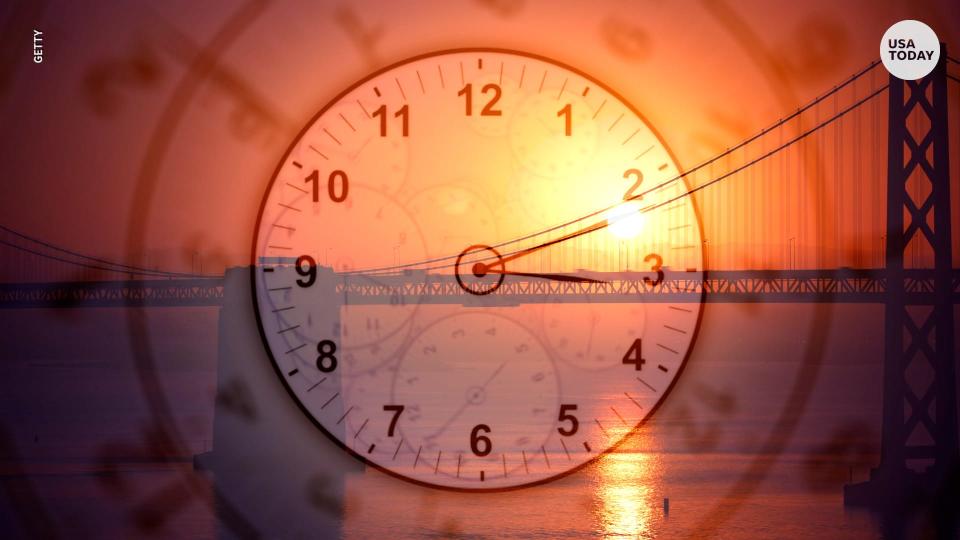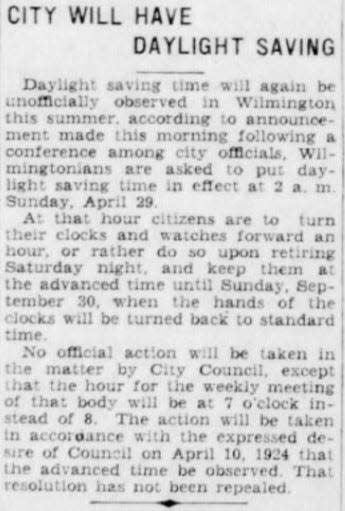Daylight saving time has begun. What to know about springing forward
For everyone who chooses to forget daylight saving time is a thing, we’re here to remind you that it is here.
Here’s what you need to know.
When is daylight saving time in 2024?
Daylight saving time, commonly – but incorrectly – referred to as “daylight savings time,” occurred on Sunday, March 10, this year. Clocks sprang forward one hour to 3 a.m. when the short hand struck 2 a.m., according to TimeandDate.com.
This change will be in effect until Sunday, Nov. 3, at 2 a.m., when clocks are scheduled to fall back to 1 a.m. and daylight saving time ends.
Why do we practice daylight saving time?

The idea behind daylight saving time is that it allows us to use natural daylight better, according to Almanac.com.
Moving clocks forward one hour in the spring provides more daylight in the evenings during the warmer months. Moving clocks back one hour in the fall provides more daylight during the winter mornings.
Advocates of the practice say brighter afternoons and early evenings help stimulate the economy, though the practice originally began to save fuel during World War I, according to Almanac.com.
Despite the seemingly simple solution, daylight saving time has faced opposition in recent years, with many wanting to do away with the practice.
Who observes daylight saving time?

Over 70 countries use daylight saving time, fewer than 40% of all countries in the world, and many have different beginning and end dates. More than 1 billion people participate in the phenomenon each year, according to timeanddate.com.
The only U.S. regions to not participate in daylight saving time are Hawaii, parts of Arizona, American Samoa, Guam, the Northern Mariana Islands, Puerto Rico and the U.S. Virgin Islands.
Look who is in town: 'Good Times' cast heads to Delaware to celebrate 50th anniversary in March. How to attend
Who's in charge of time?
Surprisingly, the U.S. Department of Transportation is in charge of daylight saving time and all time zones in the U.S.
"The oversight of time zones was assigned to DOT because time standards are important for many modes of transportation," according to the department's website.
The department is a proponent of the practice, as they say it conserves energy.
Are daylight saving time clock changes going away?

In March of 2023, the U.S. Senate passed the Sunshine Protection Act, legislation that would make daylight saving time permanent in November.
This would have eliminated the twice-annual clock-changing routine by making daylight saving time the official standard time at 2 a.m. on Nov. 5, 2023, extending the eight-month practice to year-round.
The legislation was reintroduced by Sen. Marco Rubio, R-Fla. and was supported by more than half the states.
Under the bill, states were allowed to exempt themselves by state law in accordance with the Uniform Time Act, as amended.
The House of Representatives, which held a committee hearing on the issue, had to pass the bill before it could end up on President Joe Biden’s desk for signing, but it never made it that far.
A fight for land: This Delaware town tried to take a widow's land. Then, its citizens rose up
Support for permanent daylight saving time
If permanent daylight saving time takes effect, the biggest benefit would be no sleep disruption. No need to change your clock twice a year before, at or after 2 a.m. on a Sunday in the fall and spring. Experts say ending the adjusting of clocks and disruption of established sleep patterns is better for our health.
Other perks would be an end to resetting clocks and other devices, and more time during the day to be out and about in daylight hours.
Objections to permanent daylight saving time

Opponents of permanent daylight saving time say extending sunlight later into the evening will result in greater sleep loss and pose a public health threat.
This doesn’t mean opponents of permanent daylight saving time enjoy changing clocks twice a year, though. Those who oppose daylight saving time often voice a preference for making standard time, also known as winter time, the permanent timeframe.
What is done for the beginning of daylight saving time
At least for now, Delaware remains a participant in daylight saving time and sprang forward on March 10.
With most of our computers, smartphones and DVRs automatically changing the time for us, it's not as much of a chore as it used to be. Unless you have smart appliances, microwaves and ovens are on the short list of household items that need a manual adjustment, as well as manual clocks.
Got a tip or a story idea? Contact Krys'tal Griffin at kgriffin@delawareonline.com.
This article originally appeared on Delaware News Journal: Daylight saving time is here. What to do on Sunday, March 10

